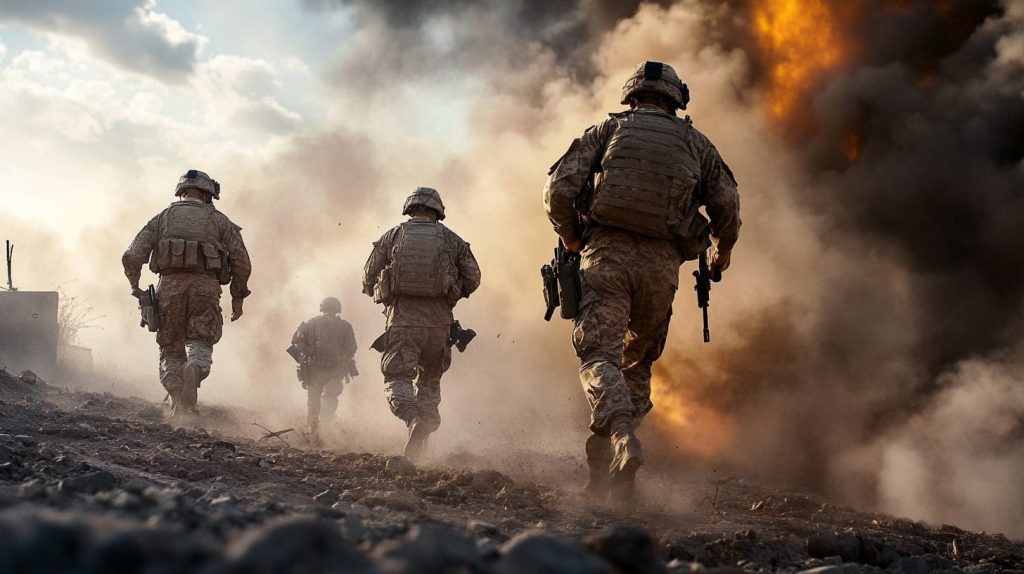From Battlefield to Boardroom The Enduring Legacy of Military History on Modern Warfare
5 min read
Introduction
In a world where technology and innovation often dominate the conversation, the timeless strategies and tactics of military history continue to hold significant sway over modern warfare. For history buffs, military enthusiasts, and strategic thinkers, the evolution of military tactics offers a fascinating lens through which to examine both past and present conflicts. This blog post aims to explore how the lessons learned from centuries of warfare have shaped the tactics and strategies employed by today’s military forces, highlighting the enduring relevance of historical military thought.
The Evolution of Military Tactics
The art of war has evolved dramatically from the days of ancient and medieval battles, yet the foundational principles remain remarkably consistent. In ancient times, military leaders like Sun Tzu and Alexander the Great laid the groundwork for strategic thinking, emphasizing the importance of deception, terrain, and psychological warfare. Their teachings continue to influence military doctrine today, with concepts like “divide and conquer” and “surprise attacks” still prevalent in modern tactics.
During the medieval period, warfare underwent significant transformations with the introduction of new weapons and formations. The use of cavalry, archers, and siege engines required commanders to adapt their strategies, leading to more sophisticated battlefield tactics. The Battle of Hastings in 1066, for instance, showcased the effectiveness of combined arms and the importance of adapting to changing circumstances. These developments set the stage for the more formalized tactics of the Renaissance and Enlightenment eras.
The Industrial Revolution marked a turning point in military tactics, as technological advancements led to more devastating weaponry and complex logistical challenges. The Napoleonic Wars exemplified this shift, with Napoleon Bonaparte’s emphasis on mobility, speed, and decisive engagements influencing military strategy for generations. The evolution of tactics during this period laid the foundation for the modern military doctrines that would emerge in the 20th century.
Influential Military Figures and Battles
Throughout history, certain military figures and battles have left an indelible mark on the development of warfare tactics. The leadership of generals like Hannibal, Julius Caesar, and Genghis Khan showcased the importance of adaptability, intelligence, and innovation in the face of overwhelming odds. Their ability to outmaneuver larger forces and exploit enemy weaknesses continues to inspire military strategists today.
Key battles such as the Battle of Cannae, the Siege of Constantinople, and the Battle of Stalingrad offer invaluable lessons in strategy and tactics. At Cannae, Hannibal’s double envelopment maneuver demonstrated the power of encirclement and surprise, a tactic that remains a staple in military training. The fall of Constantinople highlighted the importance of technology and innovation, as the use of gunpowder artillery changed the course of siege warfare. The brutal urban combat of Stalingrad underscored the significance of tenacity, resourcefulness, and the human element in warfare.
These battles and the leaders who orchestrated them provide a wealth of knowledge for modern military planners, illustrating the timeless principles of warfare that transcend technological advancements and changing geopolitical landscapes.
The Role of Technology in Shaping Tactics
Technological advancements have always played a crucial role in shaping military tactics and strategies. From the invention of the longbow to the development of nuclear weapons, each innovation has forced military leaders to adapt and rethink their approaches to warfare. Today, technology continues to drive significant changes in the way conflicts are fought and won.
The advent of firearms and artillery in the early modern period revolutionized battlefield tactics, rendering traditional formations and armor obsolete. Commanders had to develop new strategies to accommodate these powerful weapons, leading to the rise of trench warfare and combined arms tactics. In the 20th century, the introduction of tanks and aircraft added new dimensions to warfare, enabling rapid movement and unprecedented firepower.
In the digital age, technology has become an even more critical factor in military strategy. Advances in communication, intelligence gathering, and cyber warfare have given rise to new tactics that emphasize speed, precision, and information dominance. Unmanned aerial vehicles (UAVs), artificial intelligence, and cyber capabilities have transformed the modern battlefield, blurring the lines between traditional warfare and emerging threats.
Despite these technological advancements, the core principles of military strategy remain rooted in the lessons of history. The ability to adapt, innovate, and exploit the strengths and weaknesses of both one’s own forces and those of the enemy continues to be the hallmark of successful military leadership.
Lessons Learned and Their Application Today
The study of military history provides invaluable insights into the art of war, offering timeless lessons that remain relevant in today’s rapidly changing world. One key lesson is the importance of adaptability and flexibility in the face of uncertainty. Successful military leaders throughout history have demonstrated the ability to adjust their tactics and strategies in response to evolving circumstances, a quality that remains essential in modern warfare.
Another crucial lesson is the significance of understanding one’s adversaries. Historical battles and campaigns teach us that knowledge of the enemy’s strengths, weaknesses, and intentions can be the deciding factor in achieving victory. This emphasis on intelligence and reconnaissance has only grown more important in today’s complex geopolitical landscape, where information is often more valuable than firepower.
Finally, the concept of combined arms remains a fundamental tenet of military strategy. The integration of different branches and capabilities, whether it be infantry, artillery, and cavalry in the past or air, land, and cyber forces today, is essential for achieving synergy and maximizing combat effectiveness. The lessons of history remind us that success in warfare often hinges on the ability to coordinate and leverage diverse assets.
Conclusion
The impact of military history on modern warfare tactics is both profound and enduring. By studying the evolution of military thought, the influential figures and battles that shaped it, and the role of technology in driving change, we gain a deeper understanding of the strategies and tactics that continue to define the art of war.
For history buffs, military enthusiasts, and strategic thinkers, the lessons of the past offer valuable insights into the challenges and opportunities of today’s world. By exploring these timeless principles, we not only honor the legacy of those who came before us but also equip ourselves with the knowledge and wisdom needed to navigate the complexities of modern warfare.
As you reflect on the rich tapestry of military history, consider how these lessons can inform your own strategic thinking and decision-making. Whether you are engaged in military planning, business strategy, or personal development, the principles of adaptability, intelligence, and collaboration remain as relevant today as they were in the battles of yesteryear.



